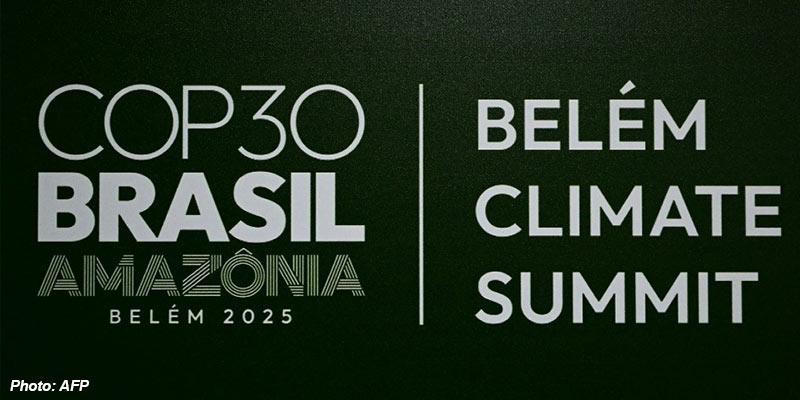- World
- Nov 10
Explainer - COP30 begins at Belem on Nov 10
• The 30th Conference of the Parties to the United Nations Framework Convention on Climate Change (COP30) will be held in Brazil’s Belem from November 10 to 21.
• COP30 in Belem comes 33 years after the Rio Summit that established the first international treaty to combat human-caused climate change, and a decade after the Paris Agreement that seeks to enhance global climate action.
• This year, the government of Brazil is hosting the annual global meeting where world leaders, scientists, non-governmental organisations, and civil society leaders gather to discuss actions to tackle climate change.
• At a moment when the green transition may feel under pressure, but climate impacts are intensifying, COP30 in Belem is a crucial opportunity to stay the course and strengthen global ambition.
• For the first time, the world’s largest climate summit will be hosted amid the rich biodiversity of the Amazon region.
What is COP?
• The United Nations Framework Convention on Climate Change (UNFCCC) is a multilateral treaty adopted in 1992, shortly after the first assessment report by the Intergovernmental Panel on Climate Change (IPCC) in 1990, to stabilise greenhouse gas concentrations at a level that would prevent dangerous anthropogenic (human-induced) interference with the climate system.
• Since entering into force in 1994, the UNFCCC has provided the basis for international climate negotiations, including landmark agreements such as the Kyoto Protocol (1997) and the Paris Agreement (2015).
• The Conference of the Parties (COP) is the main decision-making body of the UNFCCC.
• It brings together 198 countries and the European Union.
• The inaugural COP gathering took place in Berlin, Germany, in March 1995, and today the COP secretariat is headquartered in Bonn.
• COPs serve as the formal meeting place each year for the Parties to negotiate and agree on how to tackle climate change, reduce emissions and limit global warming. A primary task at COPs is the examination of national reports and emission inventories submitted by participating countries.
• These reports offer essential insights into each country’s actions and their progress toward achieving the overarching goals of the Convention.
• COPs are meant to be inclusive affairs and, as well as world leaders and government representatives, a diverse range of people from all aspects of society, from business leaders and climate scientists to Indigenous Peoples and youth, are involved, taking part in order to share insights and best practices to strengthen climate action that benefits all.
• COP decisions are made by consensus, meaning nearly every country in the world must agree. This ensures broad support and protects the interests of developing and climate-vulnerable nations.
• COPs are hosted annually in different countries. COP29 was held in Azerbaijan’s capital of Baku.
• The COP presidency rotates among the five recognised UN regions — Africa, Asia, Latin America and the Caribbean, Central and Eastern Europe and Western Europe and others. This rotation ensures that different corners of the world have the opportunity to host and showcase their commitment to addressing climate challenges.
Landmark agreements from previous COPs
a) 1997 Kyoto Protocol — first legally binding emissions targets for industrialised countries.
b) 2015 Paris Agreement — all Parties committed to limit warming below 2°C (compared to pre-industrial levels) and pursue 1.5°C.
• Over three decades, COP decisions have shaped national laws, clean energy investments and climate programmes across the world.
• While progress can be gradual and negotiations complex, COP remains the only global platform where all countries work together to respond to the climate crisis, and it continues to drive real-world action.
Key outcomes of COP29:
i) New Collective Quantified Goal (NCQG): Parties agreed to set a new climate finance goal of at least $300 billion annually by 2035 to support developing countries in their climate actions.
ii) Operationalisation of Article 6: Agreements were reached on the mechanisms for international carbon markets, facilitating cooperation among countries to meet their emission reduction targets.
iii) Loss and Damage Fund: The fund was fully operationalised to support vulnerable countries facing the adverse effects of climate change.
iv) Global Goal on Adaptation (GGA): Progress was made towards defining and implementing the GGA to enhance adaptive capacities globally.

